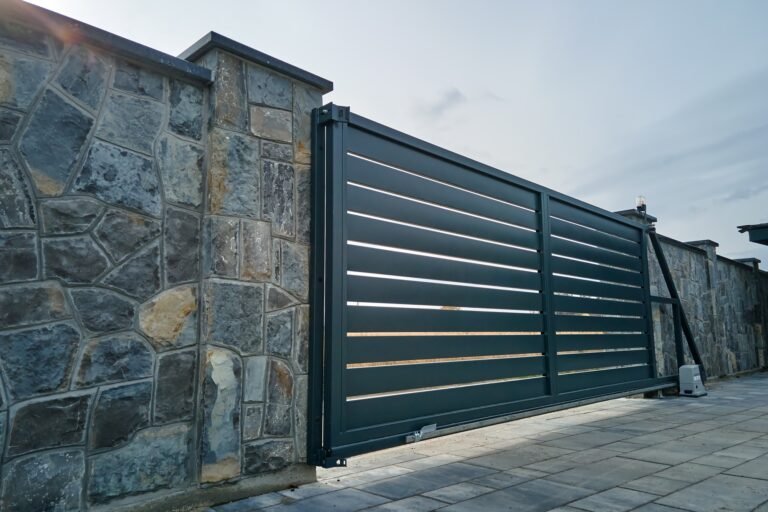When planning home improvements, knowing how long a project will take is crucial for coordinating contractors, managing expectations, and minimizing disruption to your daily routine. So, what’s the typical timeline for a custom gate automation installation?
A standard custom gate automation installation typically takes 2-3 days from start to finish, assuming ideal conditions and no unexpected complications.
However, this timeline can vary significantly based on several important factors, including the complexity of your project, the type of gate system you choose, and site-specific challenges that might not be apparent until work begins. Understanding these variables will help you better plan your installation and avoid potential delays.
What Factors Can Extend The Installation Timeline?
Several key elements can stretch the standard 2-3 day installation period into a longer project. The terrain and ground conditions often play a significant role, as rocky soil or the need for extensive grading can add 1-2 days to the timeline. Similarly, if electrical work needs to be done to bring power to the gate location, this could add another 1-2 days and require coordination with an electrician.
Custom gate designs or special features, such as intercoms, cameras, or advanced access control systems, can also extend the timeline. Your fence contractor will typically discuss these options during the planning phase, as they require additional wiring, programming, and testing, which could add an extra day to the installation process.
How Does Weather Impact The Installation Schedule?
Weather conditions can significantly affect both the timeline and quality of a gate automation installation. Heavy rain or extreme temperatures can delay the project, particularly during crucial phases like concrete pouring for posts or electrical work. Most installers recommend scheduling the project during mild weather conditions to avoid these complications.
If adverse weather is encountered during installation, it’s common for work to be temporarily halted to ensure safety and proper installation. This could extend the timeline by several days, depending on the severity and duration of the weather conditions.
What Can Property Owners Do To Ensure A Smooth Installation Process?
Proper preparation can help keep your gate automation installation on schedule. Start by ensuring clear access to the installation area, removing any obstacles or vegetation that might interfere with the work. Experienced contractors, such as Butte Fence experts, recommend marking underground utilities and irrigation systems before installation begins to avoid unexpected delays.
Having all necessary permits and approvals in place before the scheduled installation date is crucial. Additionally, making key decisions about gate design, access control features, and other options well in advance can prevent delays during the installation process. Some installers also recommend having a backup power solution ready, as electrical work might require temporary power interruptions.
What Maintenance Requirements Should You Plan For After Installation?
Once your automated gate is installed, regular maintenance is essential to ensure long-term reliability and prevent unexpected downtime. Most manufacturers recommend a professional inspection every 6-12 months, depending on usage frequency and environmental conditions. During these checks, technicians typically examine mechanical components, lubricate moving parts, and test safety features.
Property owners should also plan for routine tasks like keeping the gate track clean, checking for loose bolts or connections, and ensuring proper operation of safety sensors. Being proactive with maintenance can significantly extend the life of your gate system and help avoid costly repairs.
How Long Do Automated Gate Systems Typically Last?
The lifespan of an automated gate system largely depends on the quality of the initial installation, maintenance practices, and environmental factors. With proper care and regular maintenance, most systems can last 10-15 years before requiring major component replacements.
The mechanical elements of the gate typically last longer than the electronic components. Control boards and motors might need replacement after 7-10 years, while the gate structure itself can last decades if properly maintained. Weather exposure, usage frequency, and the quality of the initial components all play crucial roles in determining the system’s longevity.
Technological advancements might prompt some owners to upgrade their systems before they reach the end of their physical lifespan, particularly if they want to take advantage of newer security features or smart home integration capabilities.
Conclusion
Now that you understand the timeline and factors involved in a gate automation installation, the next best step is to schedule consultations with at least three reputable gate installation companies in your area. Having multiple professionals assess your property’s specific requirements will help you obtain accurate timeline estimates tailored to your unique situation, allowing you to make a well-informed decision about your installation project.


































